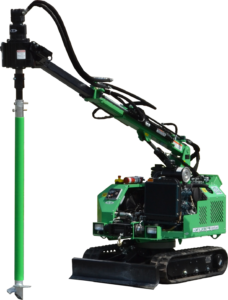Contact a dealer
01
Most popular
02
Categories
Menu
close
01
Professionals
acf domain was triggered too early. This is usually an indicator for some code in the plugin or theme running too early. Translations should be loaded at the init action or later. Please see Debugging in WordPress for more information. (This message was added in version 6.7.0.) in /home/technopieu/domains/staging.technopieux.com/wp-includes/functions.php on line 6131oxy-ninja domain was triggered too early. This is usually an indicator for some code in the plugin or theme running too early. Translations should be loaded at the init action or later. Please see Debugging in WordPress for more information. (This message was added in version 6.7.0.) in /home/technopieu/domains/staging.technopieux.com/wp-includes/functions.php on line 6131oxygen domain was triggered too early. This is usually an indicator for some code in the plugin or theme running too early. Translations should be loaded at the init action or later. Please see Debugging in WordPress for more information. (This message was added in version 6.7.0.) in /home/technopieu/domains/staging.technopieux.com/wp-includes/functions.php on line 6131wp-asset-clean-up domain was triggered too early. This is usually an indicator for some code in the plugin or theme running too early. Translations should be loaded at the init action or later. Please see Debugging in WordPress for more information. (This message was added in version 6.7.0.) in /home/technopieu/domains/staging.technopieux.com/wp-includes/functions.php on line 6131wp-cerber domain was triggered too early. This is usually an indicator for some code in the plugin or theme running too early. Translations should be loaded at the init action or later. Please see Debugging in WordPress for more information. (This message was added in version 6.7.0.) in /home/technopieu/domains/staging.technopieux.com/wp-includes/functions.php on line 6131

One cannot always build a traditional slab foundation. Piles can also be used. This technique, developed in Canada, is also used in France. The architect Sébastien Morfouasse issued an invitation to a demonstration of how these piles are driven into the ground in the urbanization of Forlach. Twenty people were present. It's very simple: A machine screws into the ground the tubes of the metal piles that have support cones on their ends. When the pile is screwed the machine exerts the necessary pressure, ie the equivalent weight that the pile can carry. The galvanized steel pipe is screwed down to obtain the mass required on the architect's drawing (2 tons, 4 tons, ...).
"One day was enough to plant the ten piles of the house," explains Olivier Le Bigot, of the company Techno Pieux Rennes-Vannes, the Canadian brand franchise. The piles were screwed up to 4 meters deep and cut between 30 and 60 cm above the ground. At the top of the piles will be installed the supports that will receive and fix the house.
The house will be 105 square metres on one floor. It will also be supported by some low walls. Around the house will be a strip of earth placed to the height of the ground, so that the piles will be hidden, but not inaccessible. Ty Coat Construction is the company that built this wooden house.
Sébastien Morfouasse, the architect, has already used this technique in the past: "For this house, we wanted a slab that was as close to the ground as possible, but for the foundation the poor soil quality forced us to dig very deep. Hence the idea of the piles grew. Otherwise, we would have had to put in a lot of concrete, which was too expensive.
In a situation that is not problematic, this technique is not advantageous from an economic point of view. But from an ecological point of view, it is smart: the day you want to remove the house, we are left with an area without foundations. During the demonstration many questions arose: On the longevity of the piles ("at least one hundred years, and then they can be changed") on their performance (models or arrangements that can withstand very heavy buildings) etc..
Odette Odin, the future owner of the house, was present at the demonstration. Her wooden house will take shape at the beginning of this year, and she is already excited about the idea of occupying it. She wanted it to be environmentally friendly and it will be. "You can have a bioclimatic townhouse" she insists.
Another aspect of this project also pleases her: "All the companies involved support processes that are friendly to the environment and to people. That includes the materials, cleanliness of the work at the end of the day, that no employee carries loads over 25 kilos .... "
Source : Ouest France
SCREW PILES
Techno Metal Post makes life easier for anyone with a construction project that requires a foundation in almost any type of soil.